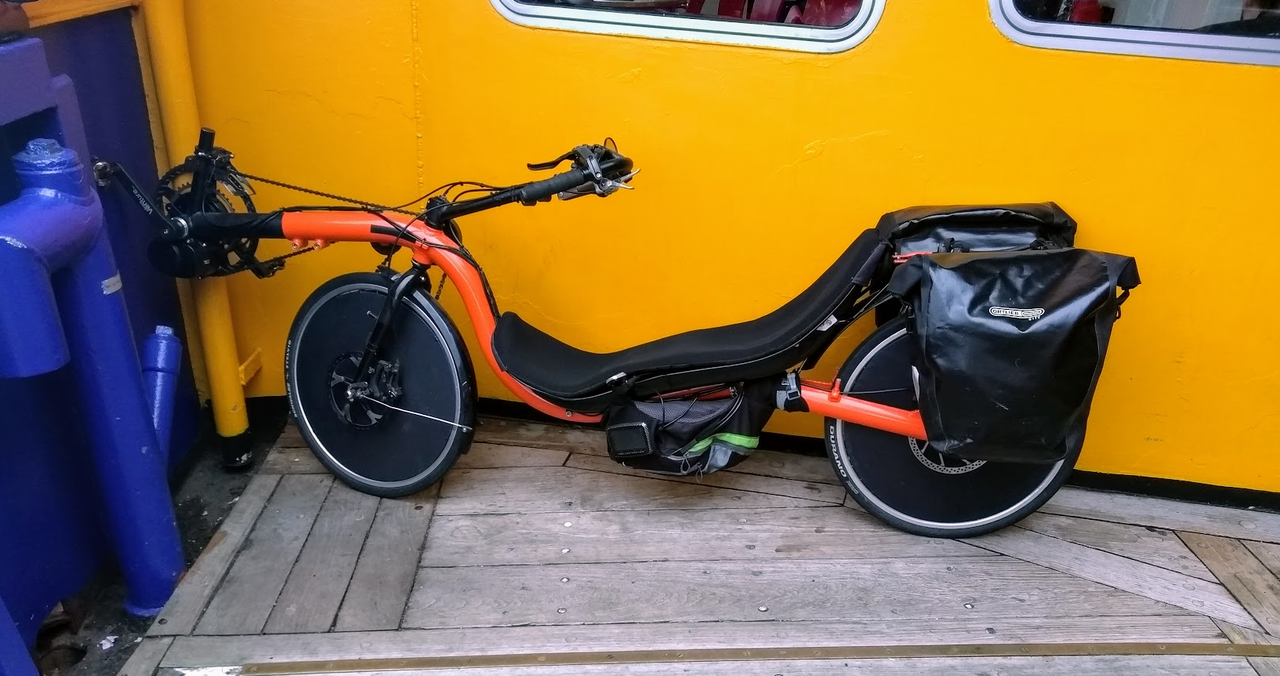I ordered a steering damper. I was debating if I'd need one and I thought I'd see how running commando went first. A fellow biker mentioned it'd be a good idea, and knowing how I have a prediliction for 100% duty continuous {it's underwritten in my manifesto} I realise there's no economy in cutting safety features.

Let's discuss why Mid-drives are the best!

Because gears!
Hub drives can't climb hills.
Hub drives don't put the motor weight low and centered at the bottom bracket. You won't find a thoroughbred eMTB with anything but a mid-drive.
Hub drives do regen (direct drive hub drives..not internally geared ones {if you weld the clutches they can though}) given how often I use the brakes I don't think that feature would be as much of an asset as an auxiliary battery.
I've looked at belts. No internally geared hub on the market can handle more than 100Nm of torque, they can grenade if you shift under load or the infinitely variable transmission versions aren't efficient. Both kinds require annual servicing. Pain in the hoop to fix a puncture on the side of the road.
The cassette is still the champion when it comes to low-weight, serviceability (you can replace one in 15 mins, an IGH; you'll haveta rebuild a wheel), largest gear range and highest input torque capability. Even with the rear derailleur as a low hanging liability.
The BBSHD comes with a 46T Chainring and I run 9 speed 11-46T cassettes. The motor RPM limit is 150 RPM. On the stock Bafang 170mm crank arms that's impossible to cadence match. Okay you could legitimately argue that at max motor output on flat ground the air resistance drag caused by pedalling exceeds the power you can contribute however I rebut that to say that in Winter pedalling is the "Cab. heater". I've found that swapping the stock 170mm cranks for
114mm is the perfect companion to the 46T chainring onna 26" rear tyre giving the rider enough resistance on the 15T rear sprocket to effectively create a
mechanical torque sensor at a comfy(er) cadence. Remember any gear higher than the 15T is
downhill only because they will get deformed if you run them on inclines. An electric motor's max torque is at 0 RPM.
If you're on a hill the rider can contribute as much useful horsepower as the motor so don't dismiss it as unnecessary. The more you pedal the longer your range and higher your fitness to boot.
The Bafangs M635 is a torque sensing motor with the same capability as the BBSHD, they're hen's teeth at the moment, I don't think you can program it and the mounting solution is a downgrade.
The BBS02 is more eMTB and less eScooter. You will feel obliged to pedal it. It just doesn't have the same grunt at 100Nm of torque and 120RPM which is a normal person more natural fast Cadence. There's a much higher availability of chainrings for the BBS02 than the BBSHD. You can go from a 36T chain ring up to a 52T so losing leverage by shortening the cranks is less necessary to hone your mechanical torque sensor setup.
A side benefit of the BBS02s is you can just about get away without upgrading the groupset to a ruggedised one. If you're cog-nisant

you'll get a decent life outtov an aluminium cassette.
A difference of 10mm in crank length is equal to a difference of 3 teeth of chain ring.
I run
140mm cranks on a 48T Chainring on my BBS02s, 26" wheels.
My roady has 170mm cranks on a 52T chainring with a 700C wheel. She does one thing better than every other bike and nothing else which is go the distance over asphalt. I thinks she has 1500 kms on her. The eMTBs have a combined 7500kms (in under a year) That shows you where my priorites are at. You just can't throw a roady around like you can an MTB and they don't hold the road in a lean.
The BBS02s are 85% efficient, the BBSHD is 80%.
I put 600kms on a BBS01, they're plenty of fun too but I won't ever be going back. If it was that or a hub drive I'd take the BBS01.












